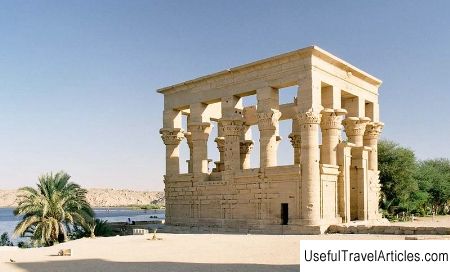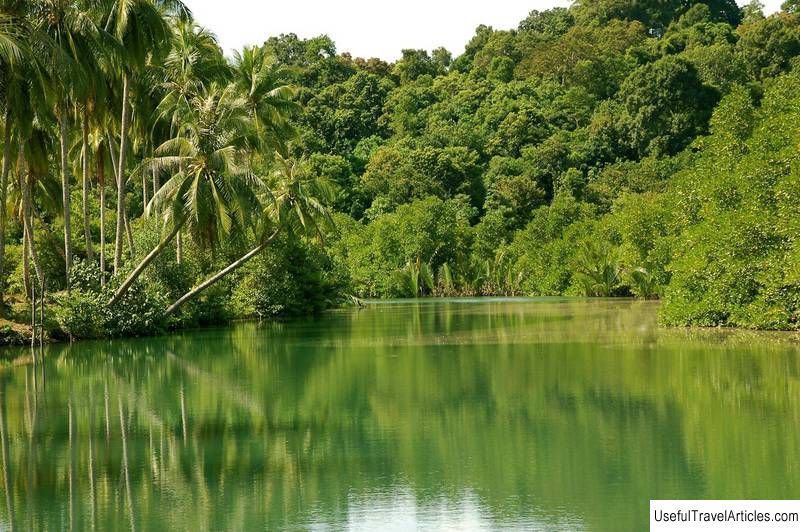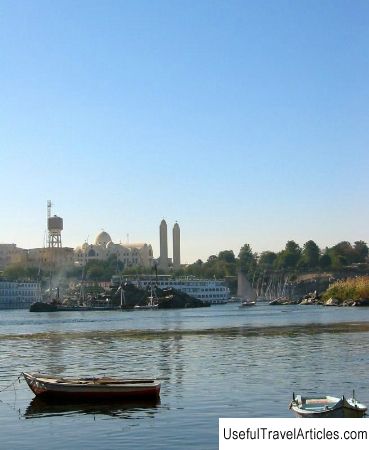Temples of Philae Island (Monuments Philae) description and photos - Egypt: Aswan

Temples of Philae island (Monuments Philae) description and photos - Egypt: Aswan. Detailed information about the attraction. Description, photographs and a map showing the nearest significant objects. The title in English is Monuments Philae. Photo and descriptionThe Egyptian island of Philae was the center of the cult of the goddess Isis. The original ancient temple island was completely submerged in the waters of Lake Nasser after the construction of the Aswan Dam. As part of the rescue operation, all the great temples and monuments of Philae were removed from the water and rebuilt on a neighboring island, which was renamed Philae. This island was one of the last outposts of the Egyptian religion, having survived the conversion to Christianity for two centuries Roman Empire. The earliest building on the island is considered to be a small temple of Isis, built around 370 BC. e. A number of rulers later expanded it to the size of the Great Temple of Isis. Other ruins date mainly from the Ptolemaic kingdom (282-145 BC), many traces of the Roman era. The sacred island attracted many Greek and Roman pilgrims who went to pray for the healing of the mysterious Egyptian goddess Isis. Even after the prohibition of other beliefs by the emperor Marcian in 451, the Nubian priests were allowed to make offerings to Isis on the island of Philae. The island's temples were finally closed in 535 AD. e. by order of the Emperor Justinian. Some of the buildings were converted for Christian worship, and the Coptic community settled on Philae, which lived on the island before the advent of Islam. To the ancient temple of Isis, a passage from the river led through a double colonnade. In front of the propylaea (the front gate) were two huge lions made of granite, behind them were paired obelisks 13 meters high. The gates were pyramidal in shape and colossal in size. At each corner of the sanctuary stood a monolithic temple - the "cage of the Sacred Hawk." These shrines have now been transported to the Parisian Louvre and the Museum in Florence. This was followed by smaller temples dedicated to Isis, Hathor and various deities associated with medicine and fertility. Their walls were covered with bas-reliefs with scenes depicting the birth of Ptolemy under the figure of the god Horus. Everywhere on the walls there are images of Osiris, and the two interior rooms are especially rich in ancient symbols. On two propylaea, carved Greek inscriptions intersect with partially destroyed Egyptian figures. The images were badly damaged by the first Christians and iconoclasts. To the south of the monumental structure is a small temple dedicated to Hathor, with several surviving columns crowned with the head of this goddess. Its portico consisted of twelve columns. Their tops are made in various shapes and combinations of palm branches and lotus flowers. The columns and sculptures on them, ceilings and walls were painted with bright colors, which lost their original luster due to the dry climate. In the 18th and 19th centuries, the island became known as a beautiful holiday destination and a popular resort with a beneficial climate. When the first Aswan Dam was built, the island began to sink under water for most of the year. The gray color at the bottom of the temples reminds of this period. The new project of the high-rise dam threatened the existence of the island, then it was decided to dismantle and move the temples. International organizations under the auspices of UNESCO carried out a number of works between 1972 and 1980. Phile Island was surrounded by a protective dam, the water was drained from it, on the neighboring island of Agilkia, a place for architectural masterpieces has been cleared and prepared. The temples were sectioned and carefully numbered and then re-erected in the same positions in a new location. Until it was possible to move two Coptic churches and a monastery, the ruins of the temple of Augustus and the large Roman city gate, they remained there, on the underwater island of Philae. The government hopes to restore them later.       We also recommend reading Church of the Deposition of the Deposition of the Kirillo-Belozersky Monastery description and photos - Russia - North-West: Vologda Oblast Topic: Temples of Philae Island (Monuments Philae) description and photos - Egypt: Aswan. |




